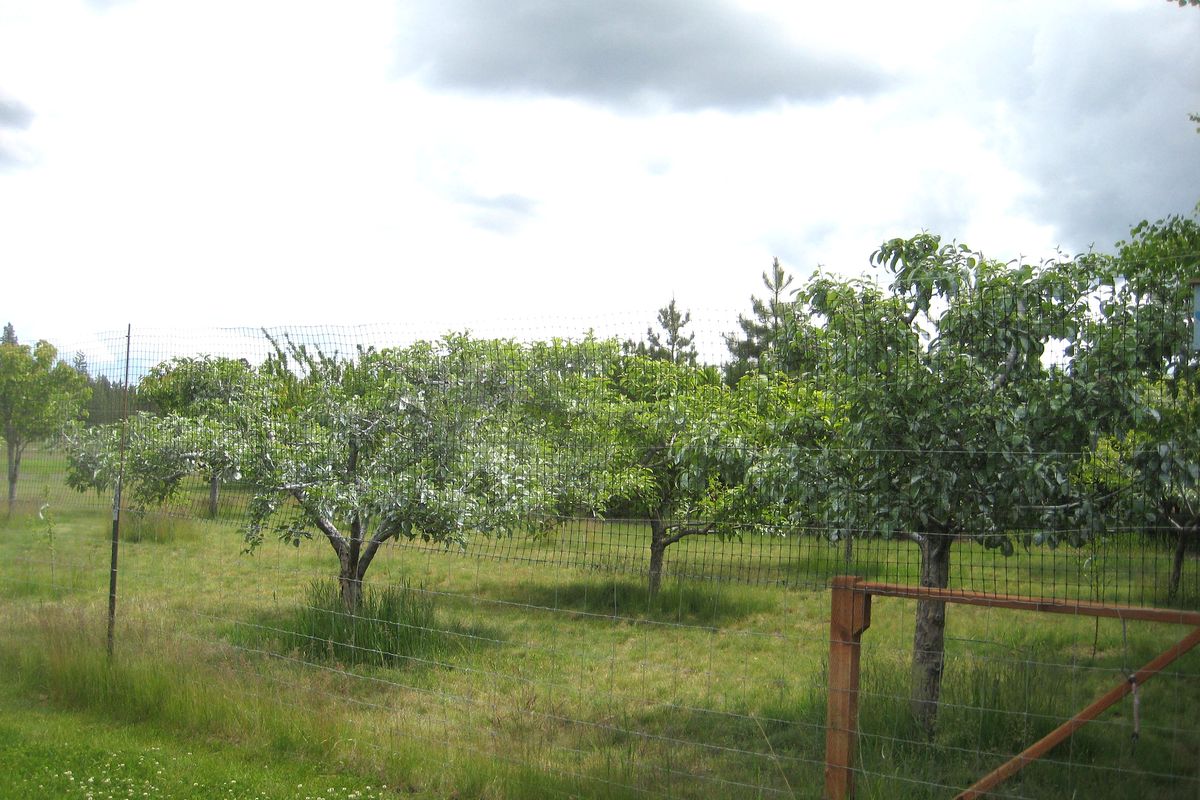In the Garden: Dealing with deer – fences most efficient deterrent, but repellants, sprinklers work, too

I get a lot of questions from gardeners about how to deal with deer. These four-legged pests can present us with huge challenges because they cause a lot of damage and they can be unpredictable.
I’m going to cut right to the chase: The most effective way to keep deer out of our gardens is through the use of barriers. Fences that are at least 7 feet tall work particularly well.
Since my husband and I live in a rural area, we wanted to avoid the use of solid fencing that would break up our view of the surrounding countryside. We mainly wanted to keep deer out of our small orchard and backyard where our vegetable garden and most of our flower beds are located.
Our 7½-foot-tall wire deer fence is very effective and relatively difficult to see, except when it’s encased in hoar frost or snow during the winter.
If you’re not crazy about the idea of such a tall fence, consider two sets of lower fences spaced about 4 feet apart. There are many designs for this type of fencing, but the concept behind it is that deer are scared to jump high and wide at the same time.
I realize that fencing a yard isn’t always an option, so let’s look at some other ways to keep the deer from munching on your edible and ornamental plants.
Deer have a keen sense of smell. Take advantage of that by using repellents. You can make your own by beating a dozen eggs, adding them to a gallon of water in a clean sprayer and applying the mixture to the plants deer find most appealing. If it rains, you will need to reapply it.
Try hanging bars of deodorant soap from tree branches, stakes or fence posts at a deer’s nose level. Even though humans think we smell great after using them in the shower, the fact is that deer find the fragrance offensive.
I don’t mind offending them one bit. If you do hang soap from tree branches, use a loose, stretchy material that won’t cut into the bark and damage the tree.
Garden centers and online sources carry a wide variety of commercial repellents. If you’re trying to keep away deer from edible plants, be sure to choose a product that is specifically labeled for this and follow the directions to the letter.
Deer are creatures of habit. Often, they’ll take the same path to a particular area of your landscape. There are adjustable, motion-activated sprinklers that will shoot a strong spray of water when something walks into range.
A word to the wise: Don’t forget about it once you’ve set the sprinkler because it might blast you instead of a deer.
Some folks string monofilament fishing line between trees or across paths that deer frequent. Since they mainly visit gardens at night, deer rarely see them, so they are startled when they walk into the lines.
In the early days of creating our landscape, we unknowingly planted deer favorites such as arbor vitae, tulips, hostas and roses. I’ve since learned that if I want to enjoy tulips, I must plant them in our backyard behind the deer fence.
Even when you apply different strategies to keep them away, be aware that drought conditions make deer bolder because they know our landscapes are filled with well-watered plants. Since we are having a particularly dry year, they might visit your yard more often than usual.
The one thing I’ve learned – and have heard repeatedly from frustrated gardeners – is that not all methods work at keeping deer out of our landscapes. What works in one garden might not work in another.
Additionally, deer don’t always know they’re not supposed to like so-called deer-resistant plants. Because of this, you need to be resourceful and flexible. Experiment a bit, ask others what they’ve had success with, and see if you can gain the upper hand against the animals.
Susan Mulvihill is author of “The Vegetable Garden Pest Handbook.” She can be reached at susan@susansinthegarden.com. Watch this week’s “Everyone Can Grow a Garden” video at youtube.com/susansinthegarden.